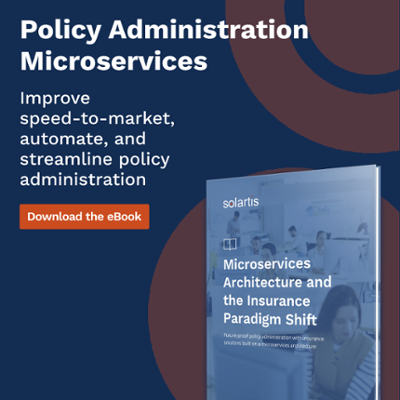The digitalization of the insurance industry is well underway. This trend has been documented repeatedly by Celent, has been reinforced during workshops and conversations at ITC 2018, and has been addressed previously by Solartis in our article "Blockchain, AI, and Digitalization: Future Techs’ Impact on Insurance"
To be successful in the coming years, traditional insurers and startups will need to innovate and adopt technologies that expand their value. Artificial intelligence is certainly one of those technologies.
ITC 2018 Workshop - Practical Applications of AI for Insurers
Insuretech Connect 2018 was an insightful and exciting conference that focused greatly on the impact of digitalization on the insurance industry. Solartis was proud to be a Title Sponsor of the event and host our own workshop about microservices. We also attended a session discussing practical applications of artificial intelligence for insurance and highlighting three interesting AI-enabled offerings in today's market.
Mobileye
Mobileye is the global leader in collision avoidance systems. Their technology uses artificial intelligence to power automated braking systems, lane departure warning technology, and speed limit indicators. Forward-facing cameras are placed on vehicles and utilize artificial intelligence to monitor, categorize, and identify stimuli ahead.
The technology isn’t 100% effective but it does decrease the severity of accidents 100% of the time. Dish Network’s fleet of vehicles experienced an 88% reduction in collisions. For insurers, incorporating this technology reduces auto collisions translating to fewer claims.
Tractable
Tractable uses an automated system to instantly predict repair costs for all kinds of damages that utilize artificial intelligence. At the conference, CEO Alexandre Dalyac showcased the platform live, illustrating how the software processes and evaluates images for repair cost estimates.
Users upload photos to a cloud-based web app of car damages, for example, and immediately receive repair cost estimates, avoiding fraudulent repair estimates and hassle. Their insurance technology enables instant settlement and straight-through processing.
Genus AI
Genus AI uses artificial intelligence and machine learning to recognize patterns in public data and establish archetypes for how consumers perceive new information. Insurers have historically communicated and interacted with consumers based on basic demographic information.
However, Genus AI enables highly informed communications and messaging to improve insurers’ CRM data integrity, marketing effectiveness, and customer retention.
AI for Insurance
Artificial intelligence has many applications for insurers and insurtechs. Many benefits center around improving the customer experience and issuing innovative insurance products. Both of these outcomes increase customer acquisition, retention, and profitability.
Improve Customer Experience with AI for Insurance
Using artificial intelligence allows insurers to make use of virtual assistants and chatbots to improve servicing of customers and improve their purchasing experience. We have dedicated ourselves to staying at the forefront of technological advancements and have actively invested in research and development for AI in the insurance industry in recent months.
We’ve seen firsthand that ordering insurance products, in our use case being travel insurance, by texting an SMS service is easy, intuitive, and insurance as it should be. Decreasing the barriers to entry for smoothly purchasing coverage has many implications for insurers including an overall increase in their book.
Behavioral Policy Pricing and Usage-Based Products
There is a massive opportunity for insurers who can connect their offerings with IoT devices and the data generated from those consumer products. For example, the proliferation of fitness tracker devices can now inform monthly premiums and grant consumers incentives for living healthy by decreasing the cost of insurance.
Similarly, connecting an IoT device to a home or warehouse can generate data to evaluate risk at the property by monitoring real-time moisture, temperature, capacity, and more. Not only can this data be interpreted by AI-enabled policy administration systems, but local fire and police departments can be notified ahead of time to prevent disasters.
Another application of artificial intelligence and IoT devices facilitate usage-based auto insurance. Consumers can connect a USB device to their car, which tracks distance, location, driving style, and more in real time. Modern policy administration systems can read and manipulate this data to change rates.
That same device can inform consumers of more optimal routes, how to be a safer driver, and monitor real-time weather conditions. Insurers need tech-enabled, modern policy administration systems that can interface with data from IoT devices to issue these innovative insurance products to their customers.
Artificial Intelligence for Insurers
In an age where other industries are becoming more consumer-focused, insurers should adopt technologies that make their offering more competitive and customer-centric. To use AI, insurers must modernize their technology and core insurance systems. Building insurance policy administration systems using microservices architecture is a crucial step in making your technology capable of incorporating artificial intelligence into your insurance processes.





.png)



